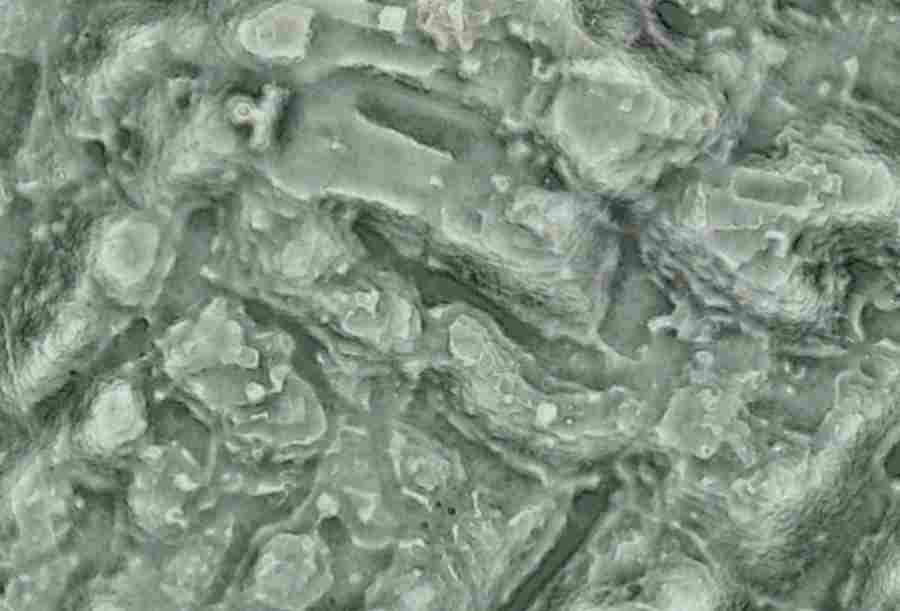True dimensions of ancient city discovered. It had as many buildings as Manhattan
Using the latest technology, archaeologists have revealed the true size of the city of Angamuco, found a decade ago. According to researchers, this ancient Mexican city had about 40,000 buildings – that’s about the size of Manhattan today.
WspóModern archaeology is increasingly ródiffers from the entrenched image of burrowing scientistsów. The latest advances in technology, most notably laser surface scanning technology – Lidar, they are supplementing and often revising existing knowledge, and at an express pace.
Lidar (Light Detection and Ranging) is a device that works on a similar principle to radar, które has gained immense popularity among theód archaeologistów. Allows in krót time to survey huge areas and to an unprecedented degree of accuracy. Otherwise, similar surveys would have taken months and certainly would not have been so carefully done. Lidar does not mean that archaeologists do not appear on the site, but after studying the aerial scanning images, they know where the most interesting places are and where to go.
Lidar scans Earth’s surface from the air. He uses lasers as a kind of radar to create 3D maps and is detailedólnie useful because it can penetrate leaves or water. Thanks to this breakthrough technology, scientists are able to digitally remove images of theóin the canopy of trees and the top layer of vegetation revealing hidden buildings, roads and other interesting to archaeologistsóat the sites. In early February, thanks to Lidar, it was discovered in póhe northern Guatemalan ruins of more than 60,000 homesów, palaceów, fortifications, dróg and other structures. For more on this topic, see text: Megalopolis Mayóin Surprising discoveries in póNorth Guatemala.
The latest technology has once again proven its usefulness. Lidar scanning has revealed the true dimensions of a until recently lost city in western Mexico, whichóre was built by the people of P'urhéunlucky also known as Tarasques.
The Tarascas in the pre-Columbian period created their own state, which theyóre rivaled the Aztec civilizationów. They were never conquered by them, but what the Aztecs failed to do, the conquistadors succeeded, któwho ravaged the lands inhabited by them. The people have survived until timeóin the commonóof modern. Today there are about 100 thousand. They have managed to preserve elements of their ancient culture and traditions and language.
Research led by archaeologist Chris Fischer has revealed the true scale of the ancient city of Angamuco, built by Taraskóin about 1,100 years ago. Complexół researchers estimated that the city had about 40,000 buildings in theóof the 26-kilometer-squareóin square. This, the researchers say, is a cfócomparable to the number of buildingsów in Manhattan, but in a much smaller area – Manhattan covers 59 kilometersóin square.
Angamuco is located several kilometersóin the westód from the former capital of the P'urh peopleéunlucky – Tzintzuntzan. It was forgotten for centuries and lay hidden in the jungle until 2009, when it was rediscovered. Angamuco was built on land flooded with lava. According to images obtained from Lidar scanning, the city was twice the size of the óof the early capital of Tarascoów. Researchers believe that at its peak, between 1000 and 1350, the city was inhabited by more than 100,000 settlersób. This makes them the largest óearly city in western Mexico.
Scientists noted róalso that the city is oddly laid out. Temples and open plazas are located at eight sites on the outskirts of Angamuco, rather than in the center, as usually seen in ancient cities of pre-Columbian cultures.
Teamół Fischer has been using Lidar to scan the city for nearly a decade now. At the time they scanned 35 kilometersóin square footage.
– It’s a huge area, whichóry was inhabited by mnóthe state of the people. We found numerous buildings and about 40,000 remains of foundationów. That’s about as much as there are buildings builtóin Manhattan – said in an interview with journalists „The Guardian” Fischer.
Archaeologists have identified many structures: roads, pyramids, cemeteries, residential buildings, palaces, gardens or sports fields. Artifacts excavated during the Angamuco dig have been dated using radiocarbon technology. The earliest points to around the year 900.
– Very little is known about the Americas’ past. Actually Lidar will find something new wherever we send it. Such a large city lay in the center of Mexico and no one knew about it. Right now every manual has to be rewritten, and in two years they will have to be updated again – admitted Fischer.
